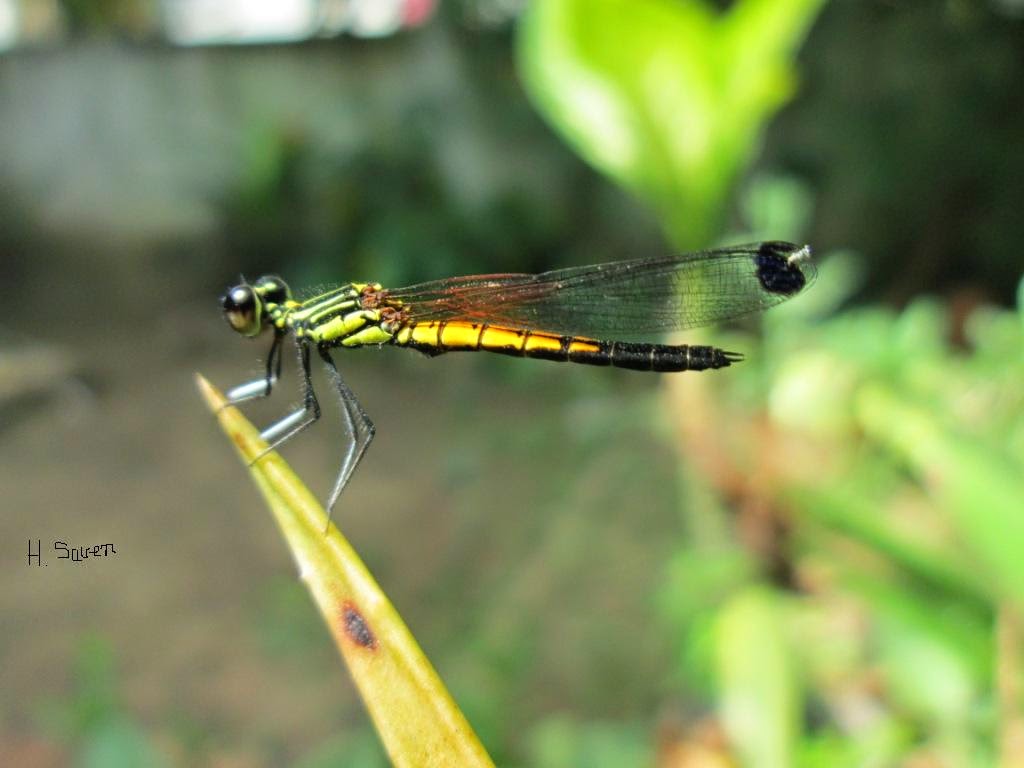Picture by Hun Saven.
The Photo take in Chroy Ampil Village, Phnom Penh, Cambodia
I shoot this species when it is on
aloe leave in front of my house in Chroy
Ampil Village,
Kbal Koh Commun, Chbar Ampov District, Phnom
Penh city. This
Specie’s name is Libellago Lineata, the name I have got from internet. When I
was young until I am now, 29 years old, I have never seen or been interested
it. Maybe, it is one type of rare damselfly in the village.
Most insects were discovered during
rainy season in Cambodia.
I discovered two times in the same year of these species. The first time it is
on mango leave in font of my house but I could not take it by my camera, but
one month later I have seen it again then I shoot about 5 shots, most of which
are not the best quality but I am happy to have finally got a good record
shooting of this species. This damselfly
maybe habitat at big lake behind my village. Because the village located along
lower Mekong river and National road No 1.
If you drive your car from Phnom Penh
to Ho Chiminh City by using this road, after you pass Prek Eng Market about 10
minutes you will see many large fields on your right hand. It is a lake field
and the field will flood during rainy season form a big lake call “Boung
Slarpchongva” located between two rivers, lower Mekong
in the north and Basak river in the south.
Picture by Hun Saven.
The Photo take in Chroy Ampil Village, Phnom Penh, Cambodia
Libellago Lineata is one of
damselflies that has wings longer than its’ body. I search this type of species
from internet. I see it is like Libellago Lineata in Singapore. Cambodia less
information about this species. So, you gonna to see the record detail about
Behaviours
of Libellago Lineata in Singapore.



